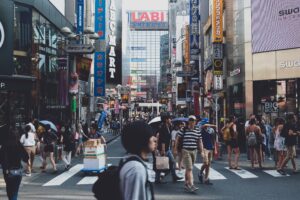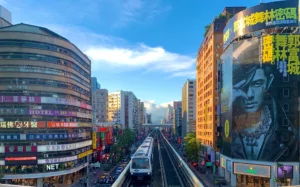
Understanding The Dynamics of Asian Territories Construction
Delve into the construction of Asian territories, revealing how history, diversity, and modern challenges shape Asia’s evolving landscape.

In recent decades, Asia has witnessed a remarkable rise and integration into the global economy. This blog post explores the emergence of Asia as a significant player in globalization, the vectors that have propelled this integration, and the strengths and limitations of the Asian economic development model. Understanding these dynamics is crucial for grasping the relevance of the Asian economic model in the era of globalization.
Asia has experienced substantial economic growth and development, transforming itself from a region of poverty to one of the world’s major economic powerhouses.
Asian countries have become vital participants in global trade and investment, with increasing shares in both exports and imports, attracting significant foreign direct investment.
While Asia has been active in trade and investment, its integration into the global migration system has been relatively recent. The Indian diaspora serves as an example of this late integration, as it has expanded globally in recent years.
Asian countries, such as China and South Korea, have adopted a state-led approach, where governments actively participate in shaping economic policies and driving development.
Asia has seen a transformation in its productive system, particularly exemplified by the Japanese model of Toyotism. This system emphasizes lean production, efficiency, and continuous improvement.
Asia’s regional integration efforts, such as ASEAN (Association of Southeast Asian Nations) and APEC (Asia-Pacific Economic Cooperation), have made progress but are still evolving. The goal is to foster economic cooperation, trade liberalization, and closer regional ties.
The Flight of Wild Geese: The Asian economic development model has often been characterized by anisotropic development, where certain regions or cities within a country experience rapid growth while others lag behind. Singapore, for example, transformed itself from a British trading post into a global city through strategic economic development policies.
Asian countries have leveraged spatial strategies to drive development. The New Silk Road initiative, connecting Asia with Europe through infrastructure projects, and the establishment of free zones in Taiwan are examples of such strategies.
While the Asian economic model has brought substantial growth, it has also been accompanied by imbalances. Environmental degradation, resource depletion, and social inequalities are some of the challenges that emerging Asia must address to ensure sustainable development.
Asia’s rise and integration into globalization have been driven by various factors, including its active participation in global trade and investment, the role of the state in economic life, and a rapidly changing productive system. The Asian economic model, with its strengths in strategic economic development and spatial strategies, has propelled this rise. However, it is essential to recognize the limitations and imbalances that come with this development model to ensure a sustainable and inclusive future for Asia in the era of globalization. By addressing these challenges, Asia can continue to play a significant role in shaping the global economy and contribute to a more balanced and prosperous world.

Delve into the construction of Asian territories, revealing how history, diversity, and modern challenges shape Asia’s evolving landscape.

Discover the pivotal role of AI in the future of geopolitics, influencing everything from military advancements to international diplomacy.

Unveiling China’s Food Security Challenges and Strategies: Import Dependency vs. Domestic Production.